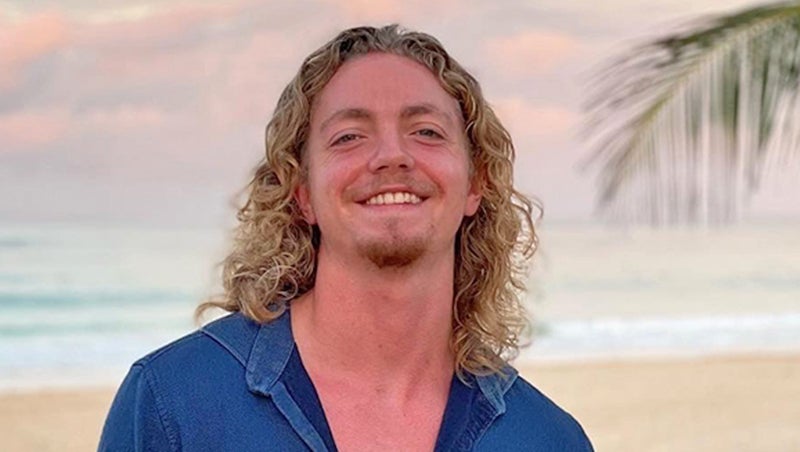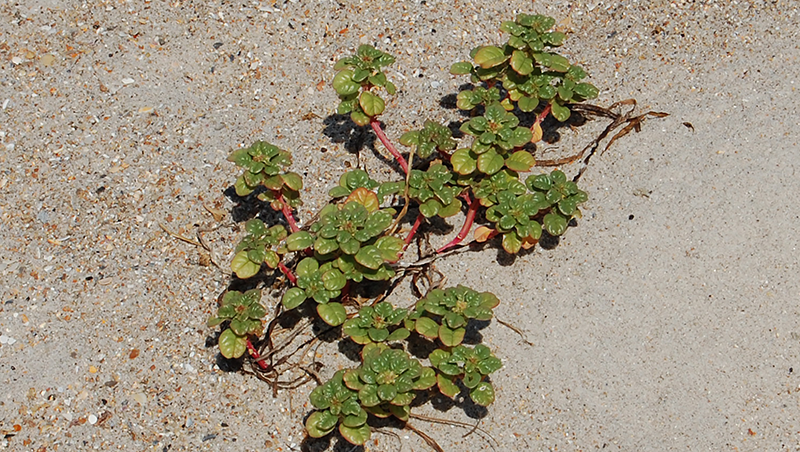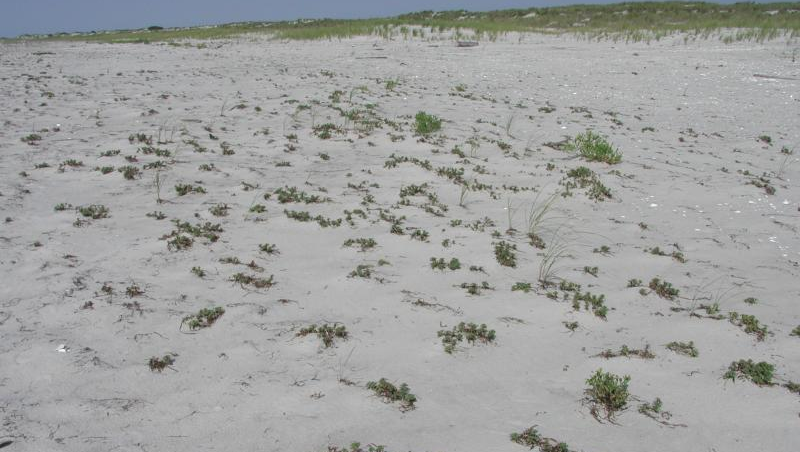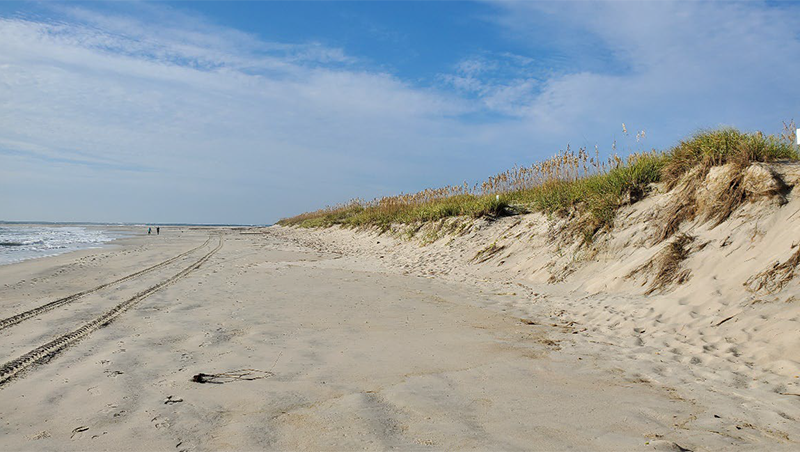Graduate student researching how plants can improve Outer Banks coastline resiliency
Published 10:44 am Wednesday, October 5, 2022
|
Getting your Trinity Audio player ready...
|
Jackson Livingstone, a graduate student at Christopher Newport University pursuing his master’s in environmental science, is focusing his research on how plants native to the Outer Banks can help the coastline become more resilient to erosion.
Livingstone grew up in Hampton Roads, Va., but spent plenty of time vacationing on the Outer Banks. He’s focusing his research here because “the scenery and beaches here reflect the beauty of the natural world and offer a glimpse of what scientists around the globe are attempting to save from our changing climate.”
“While my research interests are specific in scope, I hope to see the combined efforts of concerned citizens, government officials, and non-profit organizations amount to a visible and tangible difference in saving the Outer Banks coastlines from disappearing,” he continued.
The Coastland Times caught up with Livingstone to answer some research-based questions about how Outer Banks residents can be more involved in preserving our coastline.
Q: How does erosion happen in coastal environments?
A: In its simplest form, erosion is simply the moving of materials like sand, clay and dirt from its original deposit to another through wind and water. However, in locations like the Outer Banks, this process has been steadily increasing without the original deposits of sand returning to the shoreline. Some of the most common causes of erosion are:
- Storm surges
- Stronger and more frequent hurricanes
- Increase wave strength and/or speeds
- Sea level rise that pushes the high tide line further up
- Loss of dunes
My research focus is trying to answer the last point on that list: why are dunes being lost and what are the best long-term solutions to restoring them? And even more specifically, can the plants that naturally occur along the Outer Banks shorelines offer a cheaper and more sustainable alternative to the current methods of rebuilding dunes?
Q: How can plants help prevent erosion?
A: There are numerous species of plants that reside within the Outer Banks coastline habitat, and each of them plays an important role. Some provide food, shelter and protection for birds, sea turtles, rodents, insects and mammals of all shapes and sizes. However, my research is focusing primarily on one specific species: seabeach amaranth (also known as Amaranthus pumilus).
This plant is unique as it can survive in what most plants would view as a “hell zone” of sorts; between the start of dunes and the high tide line. While this area doesn’t initially seem inviting due to the constant wind, sea spray and extreme temperatures, seabeach amaranth can thrive if given the right conditions. Even more spectacularly, it can trap sand as its roots grow lengthwise along the shore, which begins the process of building sand dunes. Once there is enough accumulated, other plants like sea oats, yuca and bitter panicum can flourish in the newly settled dunes.
These dunes then help protect both natural habitats and property owners by providing a wall for large waves and storm surges to break against. Instead of someone’s house or business, these dunes can weather the storms and prevent further damage during events like hurricanes. And unlike the man-made dunes commonly constructed near Rodanthe, Hatteras and other locations off NC-12, these well-established natural dune systems are much more resilient and impactful.
Q: Can you share some tips for beachfront property owners based on your research?
A: As mundane as it sounds, the most important tip I can give is to call your representatives (local, state and federal) and let them know that your properties and households are at risk if erosion in Dare County is not addressed. As evidenced by the recent collapse of housing into the Atlantic near Rodanthe, this is not a future problem; this is a NOW problem. Half of the battle is simply getting our representatives to know these issues exist!
However; that solution isn’t immediate. For residents of the Outer Banks who want to help now, here are some helpful tips that homeowners can do now to prevent more beachfront from being lost:
- Remind renters of the value of the beach: tourists from around the country come every year to visit and vacation in the area and many of them don’t respect the environment around them. Posting signs and increasing awareness both inside and outside the rental properties to pick up trash, walk only on approved pathways and have a healthy sense of respect goes a long way in accomplishing our goals.
- Volunteer or donate to non-profit organizations around the area: even if you are unable to give your time, there are numerous organizations who deal specifically with protecting our beaches. In addition to nature reserves like Cape Hatteras National Seashore, Pea Island Wildlife Refuge and many more, there are grassroots movements to help clean up Dare County and provide a balance between helping people/businesses impacted by our changing environment and protecting these sensitive habitats. A great list can be found by going to twiddy.com/blog/obx-environmental-conservation/and browsing a list of organizations that speak to your concerns.
Q: If everyone in our community followed these tips, what changes would we see on our beaches? How long would it take to notice these changes?
A: Ideally, a collaboration between local and state governments and the citizens that they represent could help not only reduce the impact of erosion on our coastlines, but make sure that businesses who rely on these beaches and tourists to visit them are financially stable. The changing climate is unfortunately quite unpredictable with hurricanes and other strong storms threatening properties all along the Outer Banks. However, there is hope that coming together as a community could very well be the difference between keeping Dare County intact for future generations to enjoy or the eventual loss of hundreds of properties and beloved businesses. Everyone, regardless of economic background, age or inherent interest, has something at stake to lose if we don’t act soon.
Q: Where can residents go for support or ideas?
A: By far the best place to go for further information and ideas is the Cape Hatteras National Seashore. Even if they do not have exactly what you are looking for regarding erosion and helping our beaches, they will certainly know another organization or individual who can aid you. With decades of experience in wildlife management and coastal research, I am confident that anything you can contribute will be greatly appreciated by the individuals working there. In addition, contacting local Dare County offices like the Department of Soil & Water (darenc.com/departments/soil-and-water) can direct you to community projects currently underway. All in all, the contribution of residents living in the Outer Banks is often overlooked as the issue of erosion can seem almost insurmountable. However, even the smallest amount of help or education can truly be the difference between the success or failure of protecting these beaches and the people who live around them. If you’re interested helping with my research or want more information on the project, you can contact me at jackson.livingstone.18@cnu.edu.
Q: How can kids get involved?
A: While numerous colleges have programs in biology and coastal science, many middle and high school students can have trouble knowing where to go. The Coastal Studies Institute (a satellite campus of ECU) has numerous K-12 programs that can be found at coastalstudiesinstitute.org/k12_programs/. In addition, Carolina Ocean Studies does multiple excursions and offers programs suitable for all grade levels that help foster interest and education to students curious about marine life and preserving the coastlines. More information on that can be found at carolinaoceanstudies.com/programs.html. Almost everyone I’ve met in this field is in need of interns, research assistants and generally loves to see younger students get involved with the sciences (especially coastal science and biology) and simply reaching out shows that these scientists are making a true impact on the community!
SUBSCRIBE TO THE COASTLAND TIMES TODAY!










